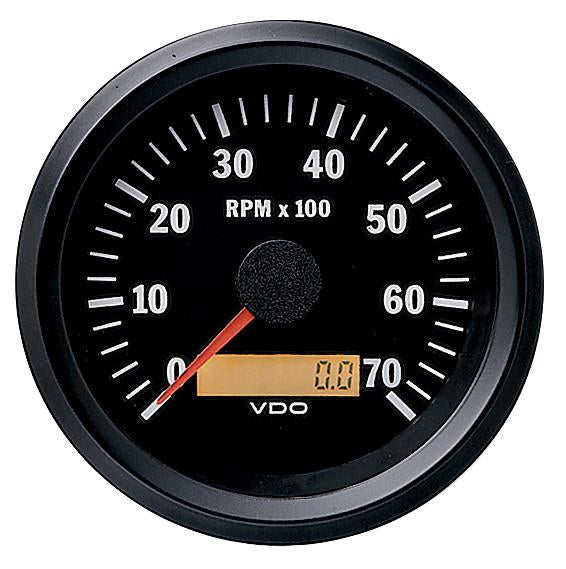Specialist Tips for Preserving and Adjusting Your Tachometer
Specialist Tips for Preserving and Adjusting Your Tachometer
Blog Article
Exploring the Functions and Advantages of a Tachometer: A Comprehensive Overview for Automobile Fanatics
From supplying real-time data on engine speed to assisting in enhancing gear shifts, the tachometer offers as more than just a dial on the control panel. Its diverse functions not just improve driving experience but likewise play a critical role in keeping engine health and wellness and efficiency.
Understanding the Essentials of a Tachometer
In the world of vehicle instrumentation, understanding the essentials of a tachometer is important for any type of automobile enthusiast looking to dig right into the intricacies of engine performance surveillance. A tachometer, usually shown on the control panel of a vehicle, determines the engine's transformations per min (RPM)
Tachometers generally have actually a range marked in revolutions per minute, with a redline showing the optimum speed at which the engine can securely operate (tachometer). This information is crucial for protecting against engine damage and optimizing gear moving for hands-on transmissions. In addition, tachometers can aid in diagnosing engine issues such as misfires or a failing ignition system by finding uneven RPM analyses
Relevance of Monitoring Engine Speed

The engine rate, measured in changes per min (RPM), suggests just how fast the engine's crankshaft is revolving. Keeping track of engine rate is especially essential throughout gear shifts, as it aids chauffeurs establish the best time to alter equipments for smooth velocity and efficient fuel intake.
Additionally, tracking engine rate can likewise provide important understandings right into the overall health and wellness of the automobile. Unusual changes in RPM might indicate issues such as a stopped up air filter, gas system problems, and even engine misfires. By finding these abnormalities early via the tachometer analyses, chauffeurs can resolve potential problems immediately, preventing more serious damages and pricey repairs down the line. In general, checking engine rate with a tachometer is a basic technique that can enhance driving performance, extend engine life, and guarantee a much safer and a lot more delightful driving experience.
Enhancing Efficiency Via Equipment Shifts
Maximizing performance with tactical gear changes is an essential aspect of optimizing a lorry's performance and power output. Appropriate gear shifting ensures that linked here the engine runs within its ideal power band, permitting smooth velocity and enhanced fuel economic situation. When moving gears, it is critical to pay focus to the engine speed indicated on the tachometer. By monitoring the engine changes per minute (RPM), vehicle drivers can establish the most opportune minutes to upshift or downshift for optimal efficiency.

To accomplish peak efficiency with equipment changes, vehicle drivers should practice smooth and timely shifts in between equipments, matching engine rate with roadway rate to harness the complete potential of their car's powertrain.
Taking Full Advantage Of Performance With a Tachometer
Understanding the art of equipment changing in high-performance lorries not just boosts driving experience however additionally plays a crucial role in optimizing performance with a tachometer. tachometer. By paying close interest to the tachometer analyses, chauffeurs can maximize their gear shifts to run within the engine's most effective variety. When speeding up, moving gears at the best RPM indicated by the tachometer can protect against the engine from overworking or underperforming, bring about boosted gas effectiveness and general performance
Additionally, a tachometer helps drivers stay clear of unneeded revving, which not only wastes gas yet likewise puts unnecessary pressure on review the engine. Constantly checking the tachometer while driving enables for smoother gear transitions, lowering damage on the transmission system in time.

Advanced Tips for Tachometer Application
To delve right into innovative pointers for tachometer application, take into consideration including the use of shift lights. Shift lights are visual indicators that brighten when it's time to change equipments based on engine revolutions per minute (RPM), allowing for smooth equipment modifications without continuously checking the tachometer. By fine-tuning shift factors and establishing alerting thresholds, drivers can maximize velocity and engine performance while minimizing the risk of over-revving.
Conclusion
To conclude, the tachometer functions as a critical tool for automobile enthusiasts to keep track of engine speed, boost performance through equipment shifts, and take full advantage of efficiency. By understanding the features and advantages of a tachometer, drivers can maximize their driving experience and extend the lifespan of their automobile. Utilizing innovative tips for tachometer application can additionally improve driving abilities and overall efficiency when traveling.
Report this page